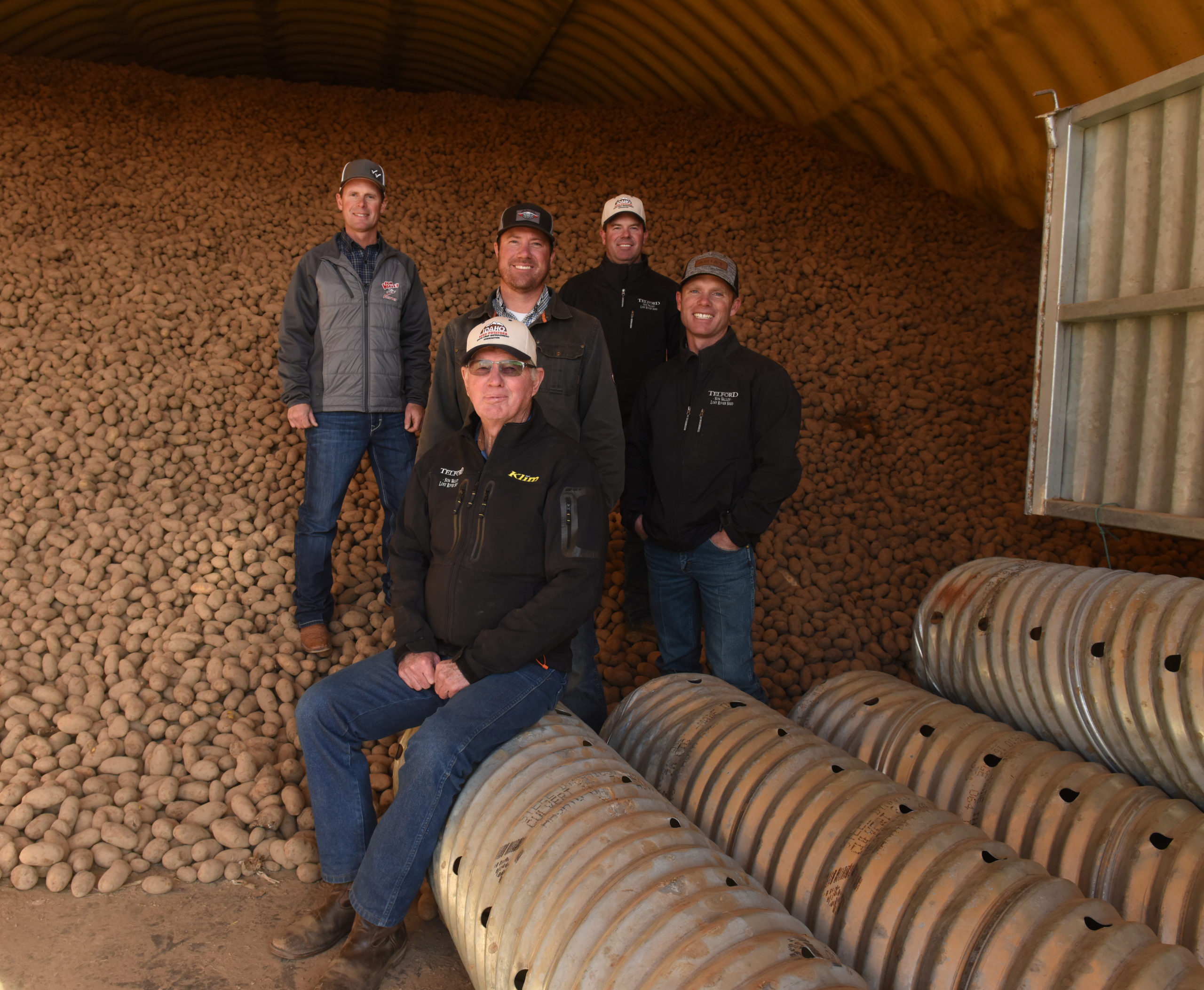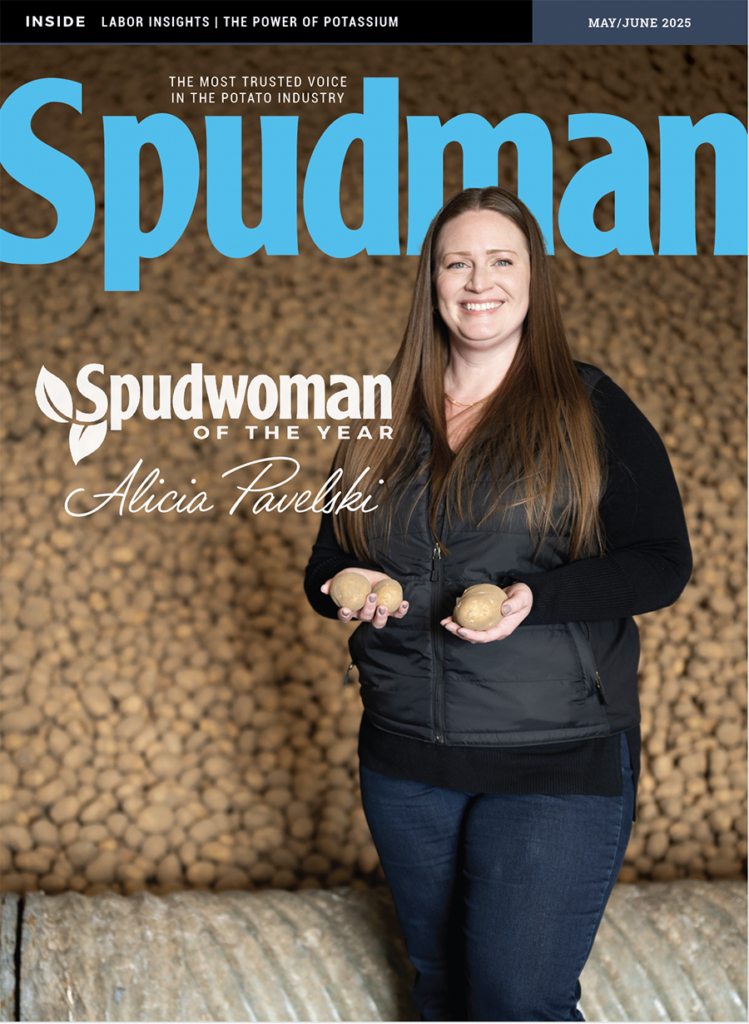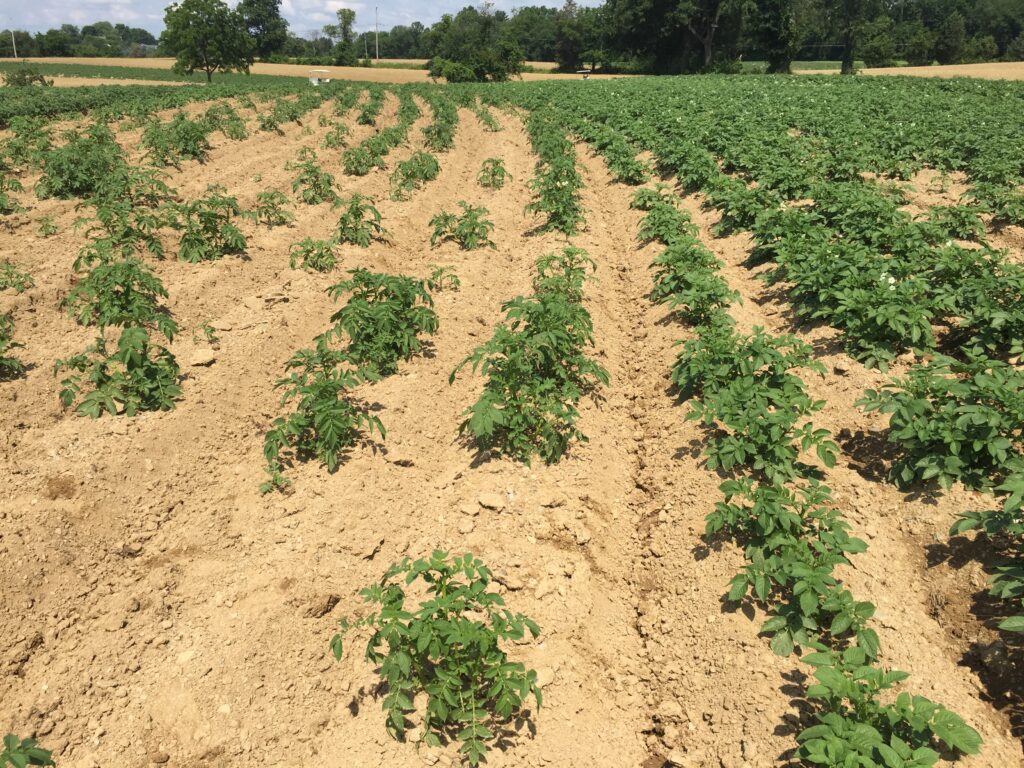
Digging up answers to disease uptick
A familiar potato disease drew recent attention in Pennsylvania with the discovery of previously unidentified pathogens.
Researchers at Penn State University collected potato stems or tubers that exhibited symptoms of black leg or soft rot from 26 Pennsylvania potato fields. The team found six species of Pectobacterium and one strain of Dickeya that previously hadn’t been reported in Pennsylvania, along with one Pectobacterium — P. actinidiae — that previously had not been reported in the U.S.
The findings were reported in January on sciencedirect.com.
UPTICK IN DISEASE
Bob Leiby, an agronomist with the Pennsylvania Co-Operative Potato Growers Inc. in Harrisburg, has worked with bacterial soft rot diseases for many years. In 2014, he was walking potato fields and noticed more symptoms than normal of blackleg, a disease caused predominantly by the bacterium Pectobacterium atrosepticum that can cause stunting, wilting, chlorosis of leaves, tissue necrosis, yield decline, and death of the potato plant.
Blackleg and soft rot are caused by the same organisms, with stem infections called blackleg and tuber infections called soft rot.
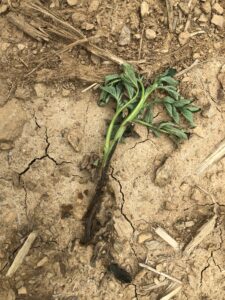
“In 2015 this problem really took off, with a lot more blackleg showing up in potato plants,” Leiby said. “We now know that part of the reason was warmer temperatures and extremely wet soils. Warm, wet conditions create ideal growing conditions for bacterial soft rot pathogens to grow.”
Mid-Atlantic states saw more bacterial soft rot symptoms, Leiby said, with large losses in New Jersey.
“Several New Jersey potato fields were not harvested because of tubers breaking down just before harvest,
so these fields were abandoned and disked,” he said. “We tried to track it down and work backwards to figure out where those seed potatoes came from and how the infections took place.”
Carolee Bull, professor of bacterial systematics and plant pathology in PSU’s Department of Plant Pathology and Environmental Microbiology, led the PSU team that identified the pathogens. She said in a news release that the findings could help better understand disease epidemiology.
“For example, the pathogens may have different optimum temperatures for growing or for producing these symptoms in the potatoes,” she said. ”So, the severity of the disease may change depending on different climate conditions.”
A FAMILIAR THREAT
While some of the species found were novel, Bull told Spudman that soft rot and blackleg are well-established diseases in Pennsylvania.
“They may have been a problem on and off, for as long as farmers have been growing potatoes — depending on environmental conditions and which cultivars of potatoes were being used,” she said.
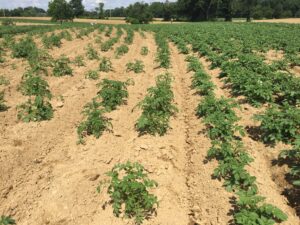
The outbreak in 2014-2016, however, drew increased attention.
“This disease was severe all over the East Coast states and some other places, so researchers around the country began to try to tease apart exactly what happened and identify the pathogens present in those samples,” Bull said. “We reported some of this research previously, in a larger study around the entire country, then did a more detailed study just for Pennsylvania.”
Certain lots of certified seed potatoes seemed to be more affected than others, leading growers to wonder if the source of the seed was part of the problem, Leiby said. In addition, some varieties seemed more susceptible than others.
The topic was much discussed among North American plant pathologists and potato seed producers in 2015. Researchers at Colorado State University, North Dakota State and the University of Maine joined the hunt for answers, Leiby said.
Bull did more detailed studies and isolated pathogens from symptomatic tissue samples.
“The organisms we reported included a number that were new for Pennsylvania and a couple that were new to the U.S.” she said. “We don’t know if they are actually new; they had not yet been isolated or distinguished from other pathogens.”
In the past, similar pathogens had been reported as Erwinia carotovora, Erwinia chrysanthemi or Erwinia atroseptica, Bull said. Erwinia carotovora was isolated in the early 1900s.
“In recent years, more taxonomic work has divided them into two different genera — Dickeya or Pectobacterium,” she said.
One species, P. versatile, was named in 2019 in Europe, Bull said, though historical sample collections showed the species was present in potatoes in the U.S. in 2001 and in iris plants as early as 1973.
“It was here all along, but hadn’t been differentiated from what is now called Pectobacterium carotovorum,” she said. “We can now differentiate different genotypes of these pathogens and begin to make recommendations to farmers. For example, one genotype may be more virulent on one potato cultivar than another. … If a farmer has a certain genotype of the pathogen in a field, we could suggest not growing a certain susceptible variety of potato.”
NEXT STEPS
Bull is unaware of a blackleg outbreak as severe as the 2014-2016 one. She said the pathogen can persist until conditions are just right for it to emerge.
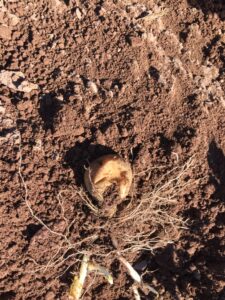
One strategy for prevention may be to increase the use of resistant seed.
“We don’t know how long these pathogens might persist in the soil,” Leiby said. “They seem to be able to exist in ground water/surface water as well as soil. There are a number of ways it might be moved around.”
As researchers continue working to detect and manage the newly identified pathogens, Bull said they need to keep the “disease triangle” in mind.
“You need the right host, the right pathogen and the right weather conditions/environment to get a disease,” she said. “Now we know there are a wide variety of pathogens that have probably been causing these diseases for a long time.”
DNA sequencing has also enabled researchers to differentiate genotypes of pathogens.
“We can now demonstrate that some of these pathogens also occur on other plants” including kiwi, Bull said.
“We are now armed with information regarding who the enemy is. Now we need to come up with management strategies.”











